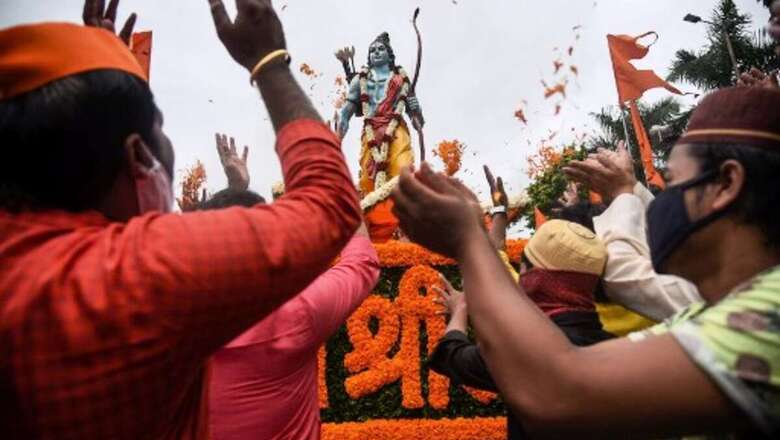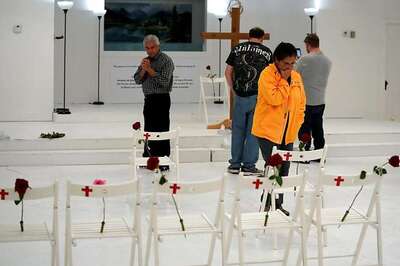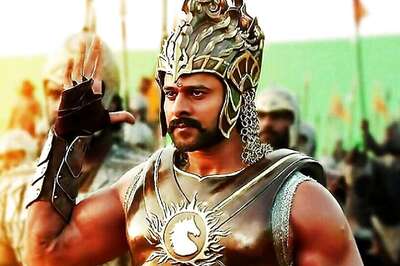
views
Even though the construction of Ram Temple began in Ayodhya on August 5, an ideological debate still continues and one of the key reasons is that due to expanse of this issue panning over at least 500-years, identifying the real facts is more challenging than finding needle in a haystack!
‘Ramjnamabhoomi: Truth, Evidence, Faith (Arun Anand/Dr Vinay Nalwa, Prabhat Prakashan)’ is a serious attempt to bridge this gap. To summarise this 500-year-long movement in a readable format is itself quite challenging. In fact, the authors have traced this interesting journey right from the birth of Lord Rama up to the Supreme Court’s final verdict on this issue that paved the way for building a Ram Temple at the birth place of Lord Rama.
Two most significant chapters in this book are related to historicity of Ram and Ramayana and what Muslim scholars of medieval and modern era had to say about the existence of Ram Temple.
The authors have mentioned some interesting facts such as, “All the places visited by Rama, still retain memories of his visit as if it happened yesterday. Time, in India, is relative. Some places have commemorative temples; others commemorate the visit in local folklore. But all agree that Rama was going from or to Ayodhya. Why doubt connections when literature, archaeology and local tradition meet? Why doubt the connection between Adam's Bridge and Rama, when nobody else in Indian history has claimed its construction? Why doubt that Rama travelled through Dandakaranya or Kishkinda, where local non-Vedic tribes still narrate tales of Rama? Why doubt that he was born in and ruled over Ayodhya?”
By using recent planetary software, it is possible to verify that these planetary positions actually took place precisely as specified in the Ramayana. These were not just stray events, but the entire sequence of the planetary positions as described by Valmiki at various stages of Rama’s life which can be conveniently verified today as having taken place.”
There are several Muslim sources mentioned by authors who shed light on the existence and demolition of the Ramjanmabhoomi.
Allamah Muhammad Najmu mentions (I-Ghani Khan Rampuri, Tarikh-I-Avadh, vol. V, pp. 200-201), “At Ayodhya, where there stood the temple of Ramachandraji’s janmsthan, there is Sitaji-ki-Rasoi, adjacent to it, King Babur got a magnificent mosque built there, which is the Jami Masjid, in 933 A.H. under the patronage of Sayyid Musa’ Ashiqan, the date of which is Khayr Baqi (923). Till date the mosque is called Masjid-i-Sita-ki-Rasoi and that temple is extant by the side... Babur got the mosque built after demolishing the janmasthan, and used in his mosque the stone of the same Janmasthan, which was richly engraved, had precious kasauti stone and which survives even today.”
Muraqqahi-Khusrawi, otherwise known as Tawarikh-iAvadh, by Shykh ‘Azamat’ Ali Kakorawi Nami (1811-93) who happened to be an eye-witness to much that happened during Wajid Ali Shah’s regime, was completed in 1869 but was published only in 1986.
Later it was published again under the title, Amir Ali Shahid aur Ma’rakah-i-Hanumangadhi. Its opening paragraph says, “According to old records, it has been a religious rule with Muslim rulers, after the triumph of Sayyid Salar Mas’ud Ghazi to build mosques, monasteries and inns, spread Islam and put a stop to blasphemous practices (bid’at), wherever they found manifestation of infidelity. Accordingly, even as they cleared up Mathura, Brindaban, etc. from the Demolishing Temple, Building Mosque 43 rubbish of non-Islamic practices, the magnificent Babri mosque (Masjid-i-sarbaland-i-Bahari) came up in 923 A.H.”
Fasanah-i-Ibrat, written by Mirza Raja All Beg Surur (1787-1867) in 1860 circa but published first in 1884, says that a glorious sky-high mosque was built during Babur’s regime on the spot where Sita-ki-Rasoi is situated in Avadh. There are several texts which clearly mention that a Muslim faqir by the name of Sayyid Mir Musa Ashiqan also played an important role in the demolition of the temple at Ramjanmabhoomi and its replacement by a mosque-like structure. A work in Persian written by a Muslim faqir, Mawalayiyy Abu-i-Karim, who belonged to the line of Musa Ashiqan, was later translated into Urdu and published in 1979. Another edition of this book titled, Gumashta Hatat-i-Ajodhya Ya’ni Tarikh-Parinahi-Madinatu was published in 1981. Interestingly, while the earlier edition gave details of how at the behest of Musa Ashiqan the Rama temple was demolished by Babur, these details went missing in the 1981 edition!
The book has also put together the long and complex legal history of this case in such a manner that the common reader can have a bird’s eye-view. It also has details of the archaeological findings. The book bridges the gap between ideological tomes and academic books on this issue which was much required.



















Comments
0 comment